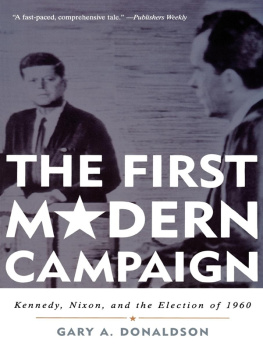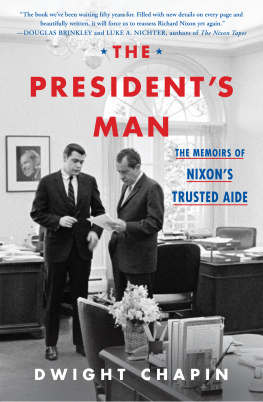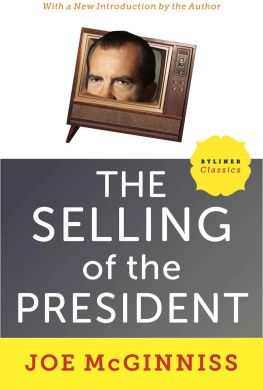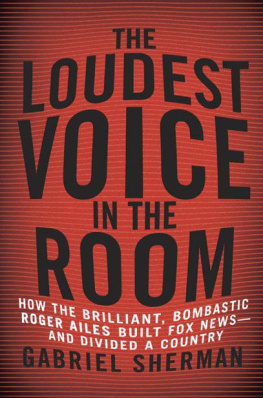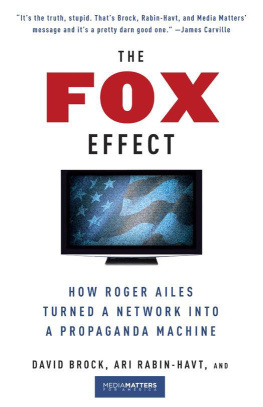
STERLING and the distinctive Sterling logo are registered
trademarks of Sterling Publishing Co., Inc.
Library of Congress Cataloging-in-Publication Data Available
10 9 8 7 6 5 4 3 2 1
Published by Sterling Publishing Co., Inc.
387 Park Avenue South, New York, NY 10016
2008 by Kerwin Swint
JACKET DESIGN: MICHAEL FUSCO | MICHAELFUSCODESIGN.COM
COVER IMAGE PROVIDED BY THE ASSOCIATED PRESS
All rights reserved
ISBN 978-1-4549-0313-0
For information about custom editions, special sales, premium and
corporate purchases, please contact Sterling Special Sales
Department at 800-805-5489 or specialsales@sterlingpublishing.com.
To Professor Bill Thomas
And, of course, my incredibly supportive family
Contents
T heres no getting around itRoger Ailes is an amazing man, of singular achievement and worldwide impact. After all, how many individuals have influenced the direction of the two most important institutions in the worldpolitics and mediafor forty years? From Richard Nixon to Bill OReilly, Ailes has been thereshaping the message, managing the performance, staging the images, and perfecting the stylistic approach that has appealed to so many Americans, whether in presidential campaigns or television news networks.
He is an immensely talented and driven individuala creative and organizational genius in the opinion of many, including this author. But in his long career he has too often used his talents to demean his adversaries, to camouflage his clients intentions, and to obfuscate the truth.
Ailes is such a fascinating subject for a book because he is, in a way, the Forrest Gump of American politics. Like Tom Hankss mythical character in the popular movie, Roger Ailes has been actively involved in most of the big political media moments of the last generation. There is no other single figure in American society who has been a key player in, first, syndicated daytime television talk and variety programming, then Richard Nixons conquest of television in 1968, the birth of the New Right in the 1970s, Ronald Reagans reelection in 1984, George Bushs 1988 presidential campaign, Rudy Giulianis first political campaign, Rush Limbaughs television show, programming for NBC as one of the networks executives, the transformation of cable television news as the founder and president of Fox News, and finally, the continued growth of Rupert Murdochs worldwide multimedia empire.
This author is no psychologist, but Roger Ailes the man actually presents the world with a very interesting conundrum. He is a very moralistic person, dedicated to preserving the principles of what he sees as the traditional American way of life. Yet in achieving those ends he has used his abilities and his talent in some very questionable and cynical ways, which seems to undercut those all-American principles. His friends say he is warm, charming, reliable, and has a great sense of humorall the qualities one would want in a neighbor. Yet, in this authors opinion, he has engineered some of the most duplicitous, misleading, and occasionally vitriolic and mean-spirited, political campaigns in American history.
What is undeniable, though, is that he has had enormous success. Since the 1960s, Ailes has been at the center of a slow-motion, decades-long conservative Republican march on American culturepushing the political and media center of the country toward the right. How has he done it? Quite simply, the man understands television better than any other person on the planet. And in the service of ideologues interested in pushing a political philosophy, he has been very adept at using TV to cast favorable images on candidates and causes he supports, while trashing the oppositionoften using, in this authors opinion, deceptive and misleading TV programs and advertising in his political campaigns, and perfecting the use of catch phrases like fair and balanced as the president of Fox News.
Its a monumental achievement, reallyit has long been an article of faith among conservatives that the main obstacle, really the only obstacle, to the widespread acceptance of conservative political thought and the long-term victory of its political strength is the liberal mass media. A firm believer in Richard Nixons Silent Majority, Ailes believes he has given a voice to that majority. This book will examine his role in this cultural, political, and media transformation as it has unfolded over the last four decades.
Roger Ailes grew up in a relatively comfortable working-class family in Warren, Ohio, in the 1940s and 50s and was taught the traditional values of small-town America: hard work, self-reliance, and faith in country. His political and media career has been very much focused on serving these traditional ideals (that he has interpreted through a conservative political philosophy) and working for those in power whom he believes share those idealspoliticians like Nixon, Reagan, and the elder Bush, and the media mogul Rupert Murdoch, the chairman of News Corporation and Fox Broadcasting.
Interestingly, one of the traits these leaders appear to have shared is the conviction that Americans, or at least honest, decent, freedom-loving people, are in a historic struggle against forces that seek to undermine the conservative, traditional America to which Ailes has dedicated his life. For Nixon, that evil force was Communism; for Reagan, it was a combination of big government, high taxes, and Communism. For Rupert Murdoch and for Ailes, it is the perverse and corrosive influence of the liberal, anti-American, anti-Western mass media.
For his part, Ailes felt strongly enough about these convictions and the political ideas behind them to work in politics for a quarter century. He likes to say that he has never been all that political, but nobody would spend twenty-five years working in partisan politics only because it was a good job opportunity. Ailes never completely abandoned the media and television business during his political consulting career, continuing to do various media consulting as well as other ventures, but politics and ideology have maintained a constant presence in his life.
The Roger Ailes story of the last forty years is very much linked to the rise of television since the 1960s and its domination of politics. His career has paralleled the dramatic ascension of TV and its ability to shape our environment. Ailes is one of the primary architects of that environment. In a way, this book is about the political communication history of the modern era, warts and allfrom the vantage point of one of its master craftsmen.
What the world needs to understand about Roger Ailes is that he is not so much a newsman as he is a showman. First and foremost, he is an entertainment producer and is very good at teaching his clients (in politics, business, and broadcasting) how to put on a great show and win over an audience.
As an early pioneer of political television, he saw its potential to influence Americans attitude toward ideas and individuals. He also understood that TV is about images and performanceseeing is believingand that good, effective TV programming could be used to alter public opinion. He would use this knowledge over the next several decades to recast the political and media universe in a more conservative direction.
Ailes would say he has used TV to educate, inform, and present views that were misrepresented or shut out of the traditional mainstream media. His critics say he has used TV to deceive and manipulate. He is seen by many as the Wizard behind the curtain in an electronic Oz, using TV to cast spells and create false images. What is without question, though, is that his made-for-TV imagery and his mastery of style over substance have made him arguably the dominant political media figure of the age.
Next page

